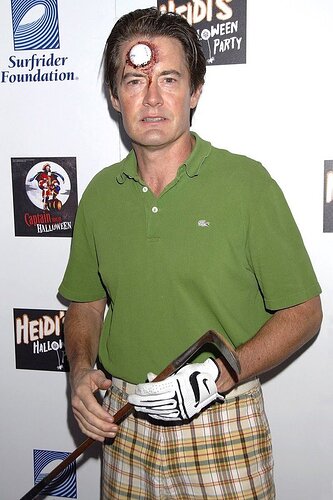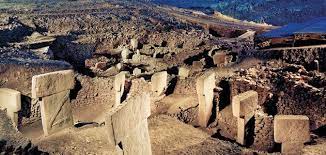Have you seen this? Our pasts catching up with us (as they will re: nuclear waste -see environment category re: Blue Hydrogen-), quote; "Two months ago, a female orca named Tahlequah captured the world’s attention by carrying the body of her dead calf for 17 days. Now, a second orca from the same group—a 3-year-old female named Scarlet—has also likely died; she was incredibly emaciated over the summer, and hasn’t been seen for three weeks. Her death means that this community of orcas, known as the southern residents, now includes just 74 survivors—a worrying 30-year low. The collapse of the salmon that these animals eat is likely the main reason for their decline. But they’re also facing other major threats, including extremely high levels of human-made toxins in their bodies.
One class of such chemicals, known as polychlorinated biphenyls (PCBs), are known to cause cancer, suppress the immune system, disrupt hormonal signals, and impair reproduction. Based on everything scientists have learned about their health effects, Jean-Pierre Desforges from Aarhus University and Ailsa Hall from the University of St. Andrews calculated how these chemicals will affect the world’s killer whales—and their prognosis is not pretty. They estimated that even in the absence of any other threats, PCBs alone will probably cause the collapse or severe decline of 10 out of the 19 orca populations they studied within the next century—the southern residents included.
“Of course, that population is also struggling with limited food,” says Desforges. “But based on our simulations, the PCB effect alone should put them in the risky category. If you add additional stressors, you can only imagine what would happen.”*
PCBs were heavily manufactured in the 20th century. They’re stable, heat-resistant, and electrically insulating, which made them ideal for use in coolants, flame retardants, lubricants, paints, adhesives, and many other industrial products. They also turned out to be incredibly toxic, and most countries banned their use and production several decades ago. But such measures came too late: The same stability that made PCBs so useful also makes them incredibly persistent pollutants.
For decades, they leached into the oceans. Plankton ingested them, fish consumed the plankton, and marine mammals ate the fish. With each successive tier of the food web, these substances become more concentrated. Killer whales, being at the very top, have the highest levels ever recorded in any animal. Populations that eat predatory fish, like the southern residents, or marine mammals, like the neighboring Bigg’s killer whales (or transients), are among the most contaminated cetaceans in the world. The orcas’ bodies are full of pollutants that are far more persistent than the animals themselves are.
For perspective, early studies showed that ringed seals stopped reproducing when PCB levels in their blubber reached 60 to 70 parts per million (ppm). The southern residents have up to 83 ppm, and the Bigg’s have between 100 and 300 ppm on average. A female orca named Lulu who died in Scotland last year had 957 ppm. Another female who stranded in Washington State in 2002 had 1,300 ppm.
“Many of us who have watched this story unfold over decades have spent many years waiting for the moment when tissue PCB concentrations finally start declining. Thirty-five years after the PCB ban, we are still waiting,” says Brenda Jensen from Hawaii Pacific University. “The reality is that these chemicals are, for timescales relevant to killer-whale life spans, permanently entrained in the marine food web.”
Using decades’ worth of measurements, Desforges, Hall, and their colleagues created a simulation that predicts how different orca populations will grow or shrink, based on their usual rates of survival and reproduction, and how those rates might change depending on the PCB levels in their bodies.
They found that the eight most heavily exposed populations are likely to collapse completely. These include orcas from Greenland, the Canary Islands, Hawaii, Japan, Brazil, Gibraltar, and the U.K., as well as the Bigg’s. Two more populations—Alaskan transients, and the southern residents—will be less severely affected, but are still likely to decline significantly. It’s no coincidence, says Desforges, that many of these populations are already very small, with just a few dozen individuals remaining.
[ What the grieving orca tells us ]
Skeptics might note that one crucial component of the team’s predictions—how different PCB doses affect reproduction—hinges on data that doesn’t come from orcas. “You can imagine how hard it’d be to do a study on PCBs and reproductive rates in killer whales. We can’t exactly expose them in a lab,” says Desforges. “We tried to take the best available data for the most relevant species.” In this case, that’s the mink—a weasel that, though much smaller than an orca, is also an aquatic, fish-eating predator, and has long been used by toxicologists as a stand-in for other marine mammals.
This caveat aside, the team’s gloomy predictions are, if anything, conservative ones. They only considered PCBs’ effects on reproduction and immunity, and not their tendency to wreak havoc on hormones or cause cancers. They didn’t consider groups whose PCB levels haven’t been measured, like the Gulf of Mexico orcas, whose numbers have fallen from 277 in the early ’90s to just 22 now.
And the team’s predictions clearly reflect the reproductive problems that scientists have noticed among the world’s orcas. In many populations, miscarriages are common, and newborn calves often die. The southern residents haven’t had a surviving newborn since 2015, and the U.K. population hasn’t had one for 25 years. “These populations haven’t recovered even after things like whaling stopped,” says Desforges. “They’re stagnating when they should be growing again.”
Levels of PCBs in the environment dropped after the near-global bans of the 1970s and ’80s, but since the ’90s, they have stabilized. The chemicals aren’t being produced anymore, but they’re still present in old equipment, paints, and other materials. Around 80 percent of these old stocks have yet to be destroyed. “Anything built in the ’60s and ’70s, there’s a good chance that they contain PCBs, and if they’re improperly disposed in a landfill, those PCBs have a chance of entering the environment,” says Desforges. “And once there, it’s extremely hard to get rid of.”
That’s especially true for killer whales. For them, PCBs are an intergenerational curse that, once placed, cannot be lifted. The chemicals dissolve readily in fat, which means they not only accumulate in an orca’s blubber, but also in its milk. Through milk, a mother orca can pass up to 70 percent of her PCB burden to her calf—a toxic heirloom that then becomes concentrated in a much smaller body. “It’s a major issue, and one that will very much impede any effort we have to reduce PCBs in the environment,” says Desforges. “That transfer will keep happening, whatever we do to clean up contaminated hot spots.”
“There is no way to hook a killer whale, let alone a whole marine ecosystem, up to some sort of dialysis machine to filter PCBs out of the tissues,” adds Jensen. “Even animals that die allow the PCB-associated fat to cycle back into the marine food web.” The only option, beyond destroying PCB stocks, is to reduce the other threats that orcas face. “An analogy for this is human cancer risk. If you find out that you are genetically predisposed to some form of cancer, you might be motivated to reduce other risk factors in your life that you can control by quitting smoking or exercising more. Now that we understand that these whales carry such a burden, perhaps we can compensate by working to provide an environment that can sustain their energetic needs to reproduce.”
PCBs are just one class of persistent pollutant, and one that’s been thoroughly studied. “We know they’re bad,” says Desforges. “But we know a lot less about many of the newer compounds that are replacing them, new surfactants and flame retardants. We have to find them and work out what they’re doing to the animals.”": https://www.theatlantic.com/science/archive/2018/09/pcbs-are-killing-killer-whales/571474/
*italics mine.
Makes one concerned about any possible cryptid populations, we have no idea what we may have done (or still be doing), to them; you must see this (thank you Bill Shatner -who first screened it on t.v-): https://www.youtube.com/watch?v=c1G76AyW1ag
Munching a baby Manatee no less (must be like foie-gras for sea -“serpents” -Manatees take a long time to be born and to mature-), “we” wondered what predated them!







